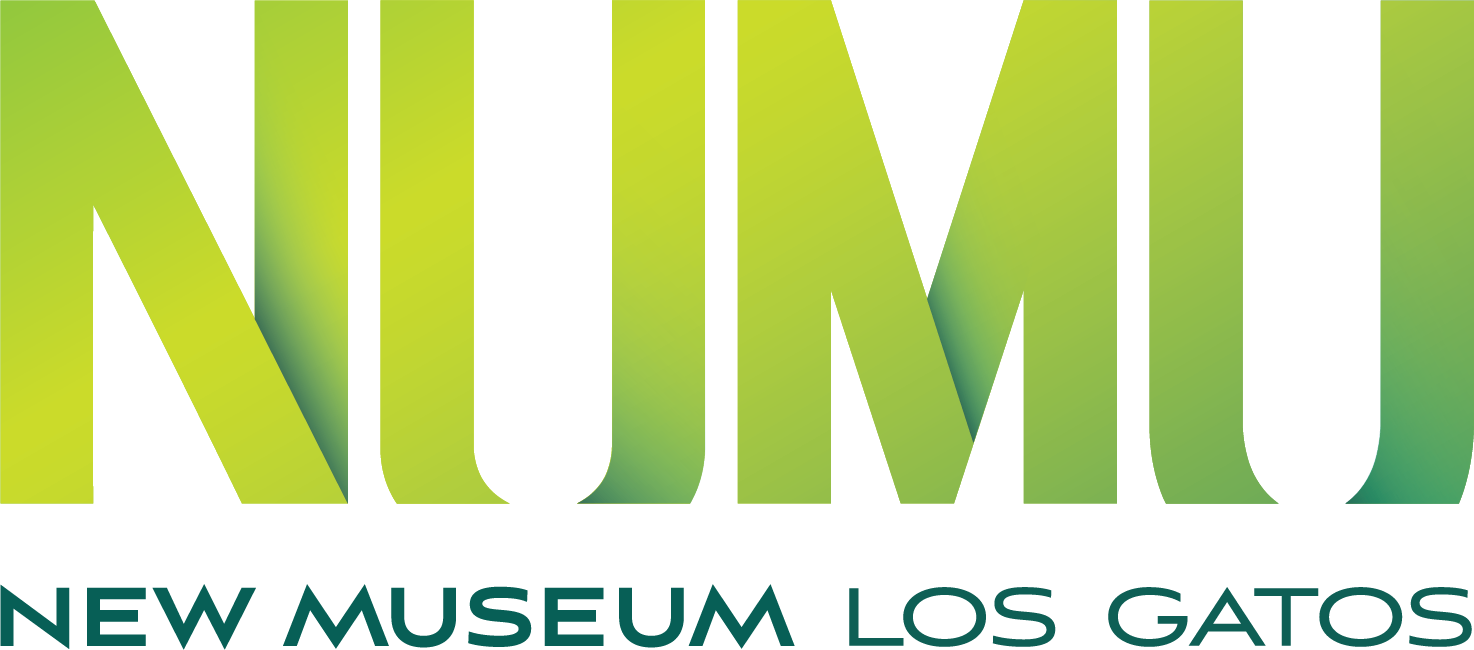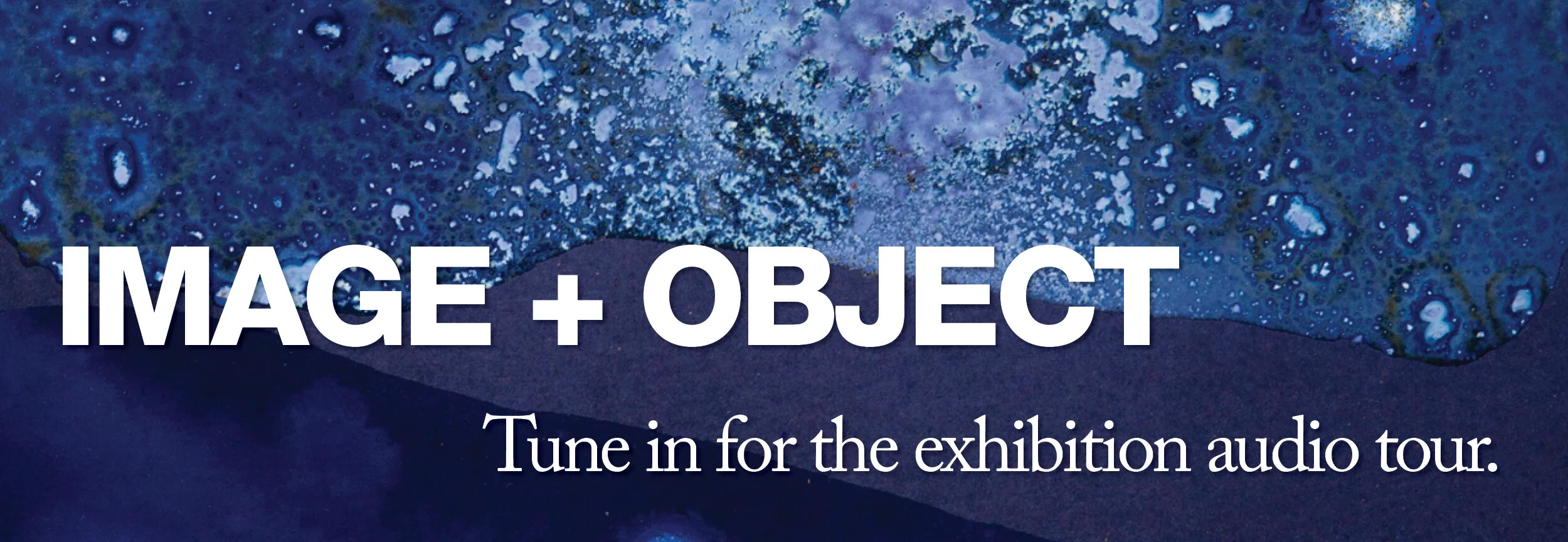Welcome to NUMU - New Museum Los Gatos, California
I am Allison Railo, curator for Image + Object, an exhibition of contemporary Bay Area alternative process photography. Thank you for joining me on this audio tour.
My hope is that you will gain a deeper understanding and appreciation for analog photography. That you will think beyond the static image and the numerous photos we see and take every day. These artists will give you so much more than a photograph. Klea McKenna, Moira McDonald, Meghann Riepenhoff and Chris McCaw have each developed individual methods for connecting photography to the physical world by enmeshing the image, the materials and the processes into one unique object. By employing early photographic methods and materials, both with and without cameras, these artists create enigmatic and un-reproducible photographs that also hold within them time, place, matter and experience. I invite you to share in that experience as you view these radical works of art.
#1 | Introduction
#2 | Klea McKenna
The Long Now (2), 2016
Photographic rubbings collage of 4 unique gelatin silver photograms
Originally trained in standard photography, McKenna herself unsatisfied with what she considered to be predictable results. Longing for something more mysterious and alchemical, she turned to photograms. Finding a way to connect with the physical environment to make a type of photogram that goes beyond the placement of an object on top of light sensitive paper and exposing it. In her earliest experiments, she would work outside at night, pressing photographic paper into the jagged, circular forms of felled trees, or the sandy surfaces of a concrete sidewalk. This physical pressure transforms the photographic paper into a sculptural relief with matching rings and cuts. Some of her pieces are embossed multiple times to create collages of layered patterns, each made through direct contact of paper, form and artist. The result is that the paper texturizes and molds to the surface, creating a sculptural object which is also chemically changed by the exposure and development of photography.
#3 | Klea McKenna
Artifact #3, 2017
Photographic relief, unique gelatin silver photogram
In a more recent series, McKenna connects with historic, traditionally feminine or woman-made objects such as lace, garments and hand-embroidery. These objects are infused with the touch of those who made them, wore them and passed them down. McKenna extends this legacy of touch as she presses each fabric directly into her photographic papers, recording the impression into the paper before exposure. As you look closely at Artifact #3, you can see the tiniest details of small fibers, sequins and the sheerest mesh folded over on itself. You will also notice wrinkles and folds in the paper, especially along the edges which have become distorted during the pressing. McKenna’s photograms are layered with labor and intention, and each piece is defined equally by the visual and physical evidence of direct contact.
#4 | Moira McDonald
Fog #141 Triptych
Three unique exposures on expired gelatin silver photo paper
The fog in Pacifica. If you’re not familiar with the rolling hills and coastline just south of San Francisco, you might not know how foggy it can get! Even in the midst of summer the misty mornings welcome you before the sun does. Moira McDonald explored this atmospheric phenomenon using expired photographic papers and filtered sunshine. Setting trays out at night, McDonald collected the dripping fog, then placed her expired papers in the trays to soak it all up. She lets the water drip and wash over the papers while the clouds are still heavy in the sky, inviting the filtered sunlight to radiate through the clouds and expose her water-soaked papers. This layered effect of fog enmeshed within the paper, the sun filtered through the fog and the visual result of foggy gray images brings that atmosphere right in front of you. Some appear ghostly and x-ray like while others are more akin to a cloudy landscape, McDonald’s images evoke the quiet darkness of a foggy morning along the rolling hills.
#5 | Meghann Riepenhoff
Tidal Chart V: Daily NOAA Tide Predictions, Half Moon Bay, CA 07.10.20 - 11.29.20
Unique dynamic cyanotype
This piece evolves in response to the tides of Half Moon Bay. There is one element for each day of the exhibition, one hundred forty-three in total. Each day, an element is cut to represent the bay’s highest and lowest tides as predicted by the National Oceanic and Atmospheric Association.
NUMU Los Gatos is so fortunate to have this unique Tidal Chart made by Riepenhoff specifically for the exhibition. Following her process of creating cyanotypes in collaboration with the ocean, this series of individual strips provide a captivating and dynamic interactive artwork which changes every day. Riepenhoff makes tangible the connection between photography and the natural world as she conveys the expansive and rhythmic nature of the ocean. From a distance, the undulating stripes and the array of ocean blues provide a sensation of movement along the wall. As one steps closer, the cottony, crystalline patches of salt and the evidence of water splashes bring you right to the ocean’s edge.
#6 | Meghann Riepenhoff
Littoral Drift #48 (Tower Beach, Hilton Head, SC 06.13.13 Three waves dipped and buried)
Unique cyanotype
I was first drawn to the concept of direct connection in photography after encountering a piece by Meghann Riepenhoff in 2014 from her series entitled Littoral Drift. The work was enigmatic and sublime: its vibrant colors and distinctive patterns full of motion. Immediately, the sensation of waves skimming over the sand came to mind, although I couldn’t quite grasp the process contributing to this effect. I learned how Riepenhoff makes each unique cyanotype and infuses it with the very compounds they depict - sand, water, and salt are embedded in the paper, physically bringing the ocean itself into a new form. This is what makes these pieces more than and different from other works of photography.
What started out as a flat, white piece of paper has undergone significant changes during Riepenhoff’s collaboration with the ocean and its surrounding environment. Coating the papers by hand, keeping them unexposed to light until they are in the chosen location, Riepenhoff then places them directly into the ocean waves, under the sand and rocks. The water and elements redistribute the surface materials and the chemicals are activated by the direct light of the sun. The visual appearance of the areas of darker and lighter blues, almost blacks, and others that are very white or transparent blue so strongly resemble the ocean and its sediments because they have fused together during their creation.
#7 | Chris McCaw
Sunburned GSP #555(San Francisco Bay), 2012.
Unique gelatin silver paper negative
Chris McCaw’s Sunburn Series is a collection of astonishing landscapes and abstract markings recorded directly onto photographic paper. In 2003, McCaw mistakenly left his camera shutter open too long and discovered the negative had been burned by the sun. This powerful, even destructive force has been brought into collaboration with McCaw and his hand-made, large-format cameras fitted with military-grade lenses. Rather than traditional negative film, McCaw places single pieces of vintage gelatin silver paper directly in his camera. The vintage material is chosen because of the chemical ingredients which react with the sun to solarize the paper and reverse the tonality, where dark becomes light and light becomes dark. In this example, notice how the streak of the sun’s path is the brightest, lightest part of the image even though this is where the most light reached the paper. The overexposure that McCaw carefully plans and controls brings out this reversal of tones. Taken even further, the sun will burn holes and gashes into the paper, revealing unexpected visions of earth’s orbit around the sun.
#8 | Chris McCaw
Cirkut #5, about 33 hours, North Slope, Alaska, within the Arctic Circle, 2015
Unique gelatin silver paper negative
As described in the title, this is one single exposure made over 33 hours in the Arctic Circle. All the photographic papers are connected together to create one long 8 foot piece. In this part of Alaska during the summer the sun never dips below the horizon, making the path of the sun visible as one almost continuous wave. The weather and clouds which obscure the sun’s path are evidence of activity and movement in an otherwise seemingly calm landscape.
McCaw modified an early 20th Century panoramic camera with motors and rollers and set it atop a tripod for this extended exposure. And though it may seem to be automated, it still requires the photographer’s constant attention and adjustments to synchronize with the earth’s orbit. McCaw delights in choosing extreme locations and cosmic phenomena like the summer solstice or a solar eclipse to bring a view and experience of our earthly existence into photographic form. The added intensity of the sun recording and burning itself into the image is the signature mark of McCaw’s artistic practice.


